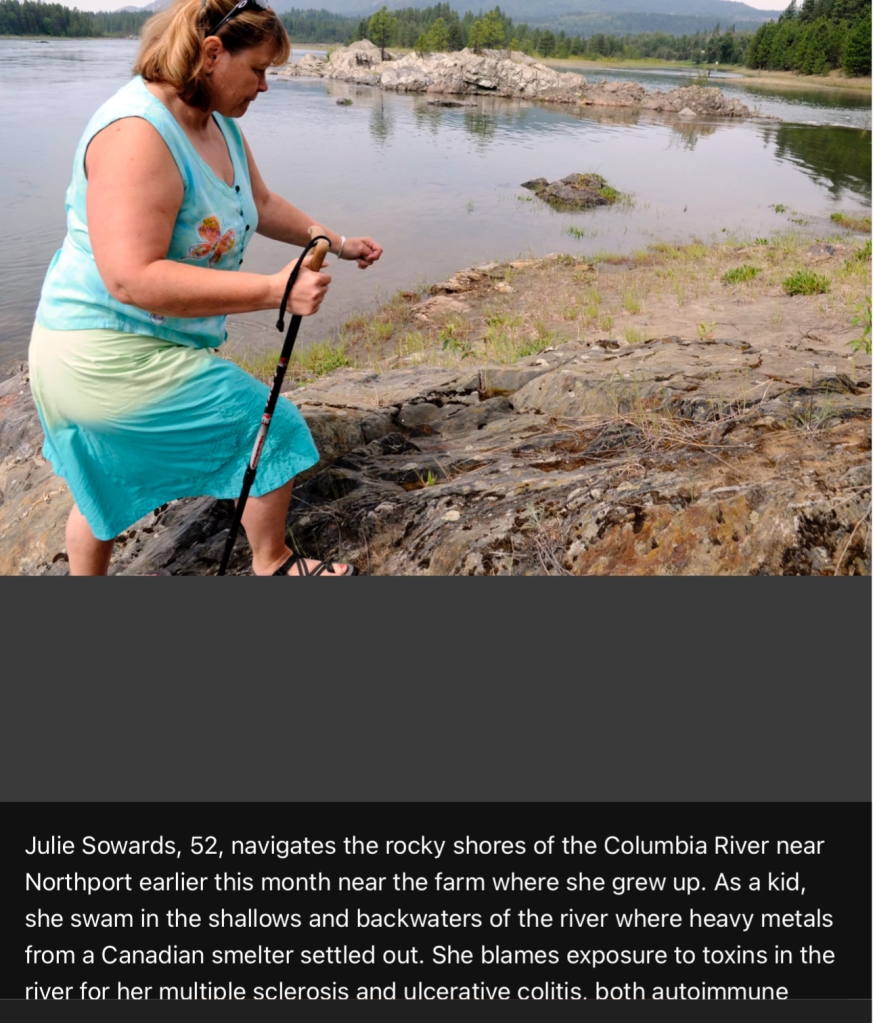The EPA recently explained to the community of Northport, WA, based on their analysis of past air monitoring data of the area, they will not be conducting any additional air monitoring in our area. The Department of Ecology analyzed the same data and came to a very different conclusion….
EPA’s Analysis
The existing data the EPA analyzed is as follows;
- Results of 4 Air Monitoring Studies conducted by Ecology in Northport between 1992 – 1998.
- All four studies concluded that levels of arsenic (.02ug/m3) were 100 times higher than the safety standard and levels of cadmium (.04) were 18 times higher than safety standards.
- Results from a monitoring station Teck Smelter operated near Northport from 1999 – 2009.
After analyzing the existing data, the EPA concluded;
- Northport’s air concentration for arsenic is, on average, 0.0042 ug/m3. This exceed the Acceptable Source Impact Level (ASIL) and the Risk-Based Concentration (RBC) level,. The ASIL and RBC are the standards used by the EPA to evaluate the risk that chronic exposure to the toxin (arsenic) will pose to the impacted population.
- Northport’s cadmium concentration is, on average, .0136 ug/m3. The Agency for Toxic Substances and Disease Registry (ATSDR) state the minimal risk level (MRL) for chronic exposure to cadmium is .01ug/m3. On the EPA National Emission Standards for Hazardous Air Pollutants (NESHAP) list Cadmium is one of 33 hazardous air pollutants that present the greatest threat to public health in urban areas.
Ecology’s Analysis
In 2017 The Department of Ecology analyzed the same air monitoring data of Northport that the EPA analyzed.
After analyzing the existing data, Ecology concluded;
- Important gaps of data was missing, making it impossible to accurately conclude the actual exposure levels of arsenic and cadmium. Therefore, they conducted an air modeling algorithm to get a more accurate concentrations of the toxins in our air.
- Some quality assurance and uncertainty issues arose in Teck’s air monitoring and reporting. Some anomalies were noted when comparing variations in PM emissions that do not correspond to variations in As, Cd, Pb, and Zn emissions. Meaning the accuracy of the emissions being reported and recorded should be called into question.
- Another issue was the quantitation limit for sampling Arsenic was measured in a bucket of 0.01 ug/m3 to 0.39 ug/m3. Meaning any levels that fell into this category were reported as a .01 ug/m3 in concentration. When in reality over 40% of those samples were actually closer to 0.39 ug/m3 . That means 40% of the samples had concentrations recorded as .01 when in reality those samples could have been as high as 0.39. That would mean the actual concentration of arsenic in our air (on average) would be 0.152 ug/m3.
Per the EPA guidelines; if the toxin exceeds the Acceptable Source Impact Level (ASIL) it is evaluated as a risk, and additional analysis is needed, especially if the toxin falls within the Risk-Based Concentration (RBC) levels. The ASIL for arsenic emissions is .0023ug/m3, and the RBC is .0023 ug/m3.
Therefore, based on Ecology’s more scientifically accurate analysis of the past air monitoring data of the area, the residents of Northport are at risk and the EPA is required to provide us additional analysis, which would require air monitoring.




Multiple Scoliosis is not a disease – check the Mayo Clinic. You might try Multiple Sclerosis. It’s well known that NE WA has a much higher incidence of Multiple Sclerosis.
LikeLiked by 1 person